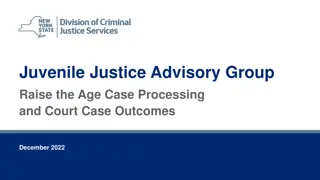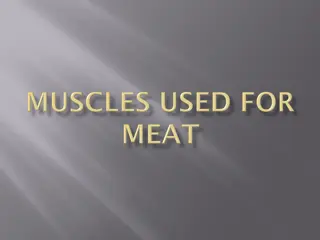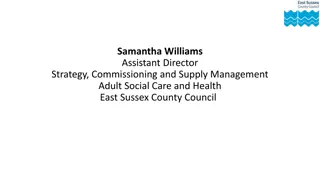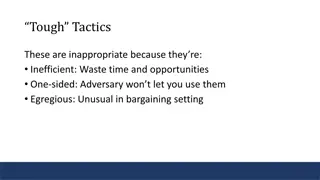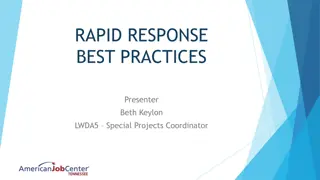
Coping with Financial Challenges in Agriculture
Explore the current economic challenges in the agricultural sector, with a focus on the Southern Plains. Learn about the projected decline in farm income, increased working capital shortfalls, rising interest costs, and the comparison to economic downturns of the past. Gain insights into the slow erosion of net income and the uncertainties surrounding commodity prices, interest rates, tariffs, and global crop supply. Discover why a rapid commodity price recovery is unlikely and what the future may hold for farmers and producers.
Download Presentation

Please find below an Image/Link to download the presentation.
The content on the website is provided AS IS for your information and personal use only. It may not be sold, licensed, or shared on other websites without obtaining consent from the author. If you encounter any issues during the download, it is possible that the publisher has removed the file from their server.
You are allowed to download the files provided on this website for personal or commercial use, subject to the condition that they are used lawfully. All files are the property of their respective owners.
The content on the website is provided AS IS for your information and personal use only. It may not be sold, licensed, or shared on other websites without obtaining consent from the author.
E N D
Presentation Transcript
Managing in Tough Times Rodney Jones Rodney.jones@okstate.edu 405 744 6173
We Are In Tougher Economic Times In general more true for crop based operations than for cattle or mixed operations Degree and type of financial stress varies from producer to producer Some evidence it is more pronounced in Southern Plains due to more growing condition challenges
Facts and Projections Overall U.S. net farm income forecast to drop 13% from 2017 levels (already less than half of 2013 levels) Southern Plains down 21% from 2017 Frequent examples of working capital shortfalls Interest costs rising Loans harder to secure Overall debt increasing at a slow pace, but faster for some producers
Is it the 1980s Then, very rapid decline in commodity prices along with rapid increase in Interest rates resulted in a very fast farm sector economic downturn that lasted a few years followed by a steady recovery
Is it the 1980s Now, a multi year slow erosion of net income with no end in sight yet We have seen this type of a downturn before 1920 s extended (12-13 year continued gradual erosion of net farm income followed finally by a fairly rapid recovery starting in early to mid 1930 s
Where Do We Go From Here How rapidly will interest rates rise Impact of retaliatory tariffs Will we see a more global crop shortfall to stimulate a supply related commodity price bump For Oklahoma, will the cattle price cycle low point come along while crop prices are still struggling, impacting even our more diversified operations
Dont Count on a Rapid Commodity Price Recovery at This Point Current projection is that this downturn will last a while longer, and we will likely see modest interest rate increases as well
Aside From Luck or Good Fortune What Can You Do Every producer has a different starting point story. Some have been in business a long time, have accumulated equity in various forms, have low debt payment obligations, etc. Obviously those are better able to weather the storm. What about the rest of us?
Carefully Monitor All Five Broad Categories of Financial Position and Performance Liquidity, Solvency, Profitability, Financial Efficiency, and Debt Repayment Capacity Which are most important Cant say, however Liquidity and debt service ability are somewhat related, probably the first areas to start to reveal problems, and are in general the most frequent sources of problems right now.
Detecting and Correcting Numbers will probably tell the story before the operator realizes a problem is developing Cash flow shortfall Selling down inventories Typically it is the liquidity and repayment indicators that deteriorate first
If Multiple Categories of Problems are Identified Solvency, Liquidity, Efficiency, etc. Extremely difficult for a business to overcome a situation where they have multiple categories of systematic problems
Short Term Financial Stress Localized drought Shortfall in current income (low prices) Bad Luck (machinery repairs, etc.) Unforeseen expenses One time increased living withdrawals
Is It Really Short Term? If the farm has been historically profitable and efficient, and you don t see unwarranted increase in withdrawals, you can be more comfortable with the short term assessment Look at historical measures Look at withdrawals Look at current production and prices compared with history Make best judgement
Short Term Financial Stress Respond by: Managing cash flow Managing Liabilities Managing Assets Remember, Early signs nearly always show up as a cash shortfall
Short Term Financial Stress Managing cash flow Control costs (sharpen pencil), and don t forget basic economic principles Re-negotiate cash rents and other ongoing costs Reduce capital expenditures (repair rather than replace)
Short Term Financial Stress Managing cash flow Reduce family withdrawals Rent out un-used facilities excess equipment (custom work) Liquidate underutilized assets Increase non-farm income
Short Term Financial Stress Manage Liabilities Extend loan terms (buy time) Interest only payments (use only if shortfall is very temporary) Reduce debt using off farm sources, or sale of unproductive assets Re-finance at a lower rate
Short Term Financial Stress Manage Assets Liquidate cash and investments Sell inventories Sell capital assets Be aware of tax consequences
Sorry I Dont Have Easier Answers Post any questions or comments in the chat box Please give us some feedback https://okstatecasnr.az1.qualtrics.com/jfe/form/SV_bsm3mbZ3EkWDCQt




